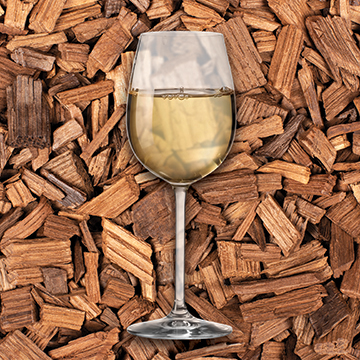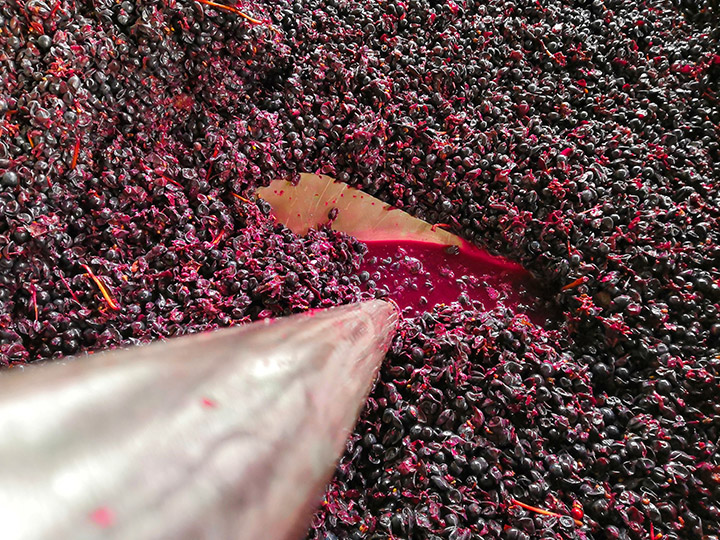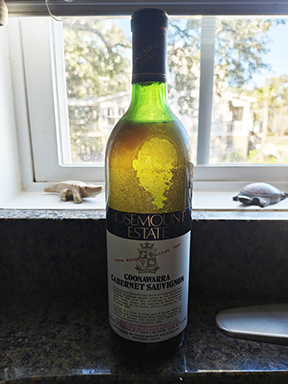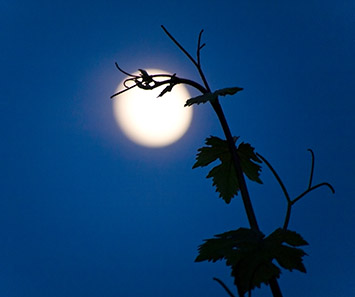Writer: Alison Crowe
Small Barrels, Unwanted Secondary Ferments, Natural Ferments, & Cold Stabilization
The Wine Wiz explains the differences winemakers must consider when aging wine in smaller-volume oak barrels. She also troubleshoots an unwanted secondary fermentation, explains that all fermentations are “natural,” and offers tips for cold stabilization.
Aging in Small Oak Barrels
This is a great question, and one that touches on the beautiful interplay between wine and wood. The short version is that the smaller the barrel, the more oak contact your wine
Unwanted secondary fermentation
Thanks for writing in with your fizzing rosé mystery. I can see why it caught you by surprise — there’s nothing quite like popping open a bottle you meant to be still
“Natural” fermentations
You’ve bumped into one of the more debated (and sometimes misunderstood) corners of winemaking: “Natural wine” and whether you need to inoculate with a known yeast strain. It’s a lively topic, and
Cold stabilization
Cold stability is one of those topics that sounds simple on the surface but gets tricky once you look at the details. What we’re trying to prevent is the formation of tartrate
Over-Oaked Chardonnay, Choosing Yeast, Hard Water, & Stuck Ferments
Always start small with additions — it’s much easier to add more than to take something out later. That said, the Wine Wizard shares advice for rescuing an over-oaked Chardonnay, along with tips on selecting yeast, managing hard water, and troubleshooting a stuck fermentation.
Curing an over-oaked Chardonnay
You’re not the first winemaker to tumble into the oak pit. The short answer is: No, you can’t take the oak out — but you can try to balance things with a
Choosing Yeasts
Yeast selection is one of those underappreciated levers in winemaking that can really shape your finished wine. Flavor, aroma, mouthfeel, fermentation kinetics, and even clarity are all on the table. And you’re
Dealing With Hard Water
Great question — and you’re right to pause before filling up your winemaking bucket straight from the tap. While clean municipal water might be fine for drinking or dishwashing, it can introduce
Stuck Syrah Fermentation
Ah yes, the mid-ferment stall . . . so common, yet always a bit of a heart-stopper. When fermentation slows or stops around 5 °Brix, it’s usually a sign your yeast are
Maximizing Color Extraction, Wine Aging Temps, a Need for Decating, & Taming Tannins
The Wiz offers advice on maximizing color extraction and shares the impact temperature plays in it. Plus: How cold is too cold to age wine, why a wine may require long decanting times to open up, and techniques for taming tannins.
Maximizing Color Extraction
You’re absolutely right to be thinking about how temperature affects the color of your final wine, especially if you’re fermenting outdoors. How cold or how warm a fermentation is plays a huge
What temperature is too cold to age wine?
Greetings from right here in Napa! Like you, I bundled up a bit more this past winter and kept a close eye on cellar temperatures — it was definitely one of our
Do tannins soften over time?
Congrats on crafting a bold Bordeaux-style blend with strong aroma and flavor! That’s no easy feat, especially when you’re juggling the powerful personalities of grapes like Cabernet Sauvignon, Merlot, Malbec, and Petit
Why does my wine require long decanting times?
That long decant time you’re noticing — needing about three hours to “open up” in the glass — is something many winemakers (myself included) have encountered with young red wines, especially those
A Ghost of Cabernet Past, Swing-Top Bottles & Bottle Shock
A 40-year-old Cabernet Sauvignon that’s now as white as a ghost? Oh no! The Wine Wizard gets to the bottom of this spooky phenomenon and also discusses the pros and cons of bottling wine in swing-top bottles and how to combat bottle shock.
Red Wine Lost Its Color
A. Ah, the joys (and occasional shocks) of rediscovering long-forgotten bottles! Your 1984 Australian Cabernet, now ghostly pale with all its color settled at the bottom, is a fascinating case study in
Using Swing-Top Bottles
Your switch from natural cork to swing-top bottles is an entirely reasonable one given your storage constraints, and you’ve taken the right steps to ensure your wine is kept in a stable
Dealing With Bottle Shock
Sounds like you’ve been bottle shocked! That, and you are experiencing some post-bottling sedimentation. You’re not alone in this, my fellow winemaker. Many a vintner, professional and amateur alike, has been surprised
Taming Tartness, Adding Body, & Non-Alcoholic Wine
The Wine Wiz offers her wizdom to bring a tart wine into balance, as well as ways to add body to a wine and why non-alcoholic wine production should be left to the pros.
Can I make non-alcoholic wine?
With the increasing popularity of non-alcoholic (NA) wines, it’s no surprise that home winemakers are wondering if they can craft their own. The short answer is that while it’s possible to remove
Adding body to wine
Enhancing the body of your grape wine with bananas is a time-honored technique among home winemakers. Bananas are rich in complex polysaccharides — long-chain sugars — that, when extracted, can impart a
Taming Tartness
Your wine’s sharpness after adding tartaric acid is a classic case of how pH and perceived acidity don’t always play by the same rules. You did the right thing for microbial stability
Racking in Moonlight, Acetobacter, Fermenting “dry,” and White Winemaking
While there are a lot of urban myths surrounding winemaking, the one about racking under a full moon isn’t totally hogwash. Plus, what to do when your wine begins turning to vinegar, the specific gravity of a “dry” wine, and tips for making wonderful white wines.
Racking by the Light of the Moon
While there is so much hooey out there about “don’t rack during a new moon” or “only bottle during a full moon,” the winemaking dictum you mention is based, at least loosely,






